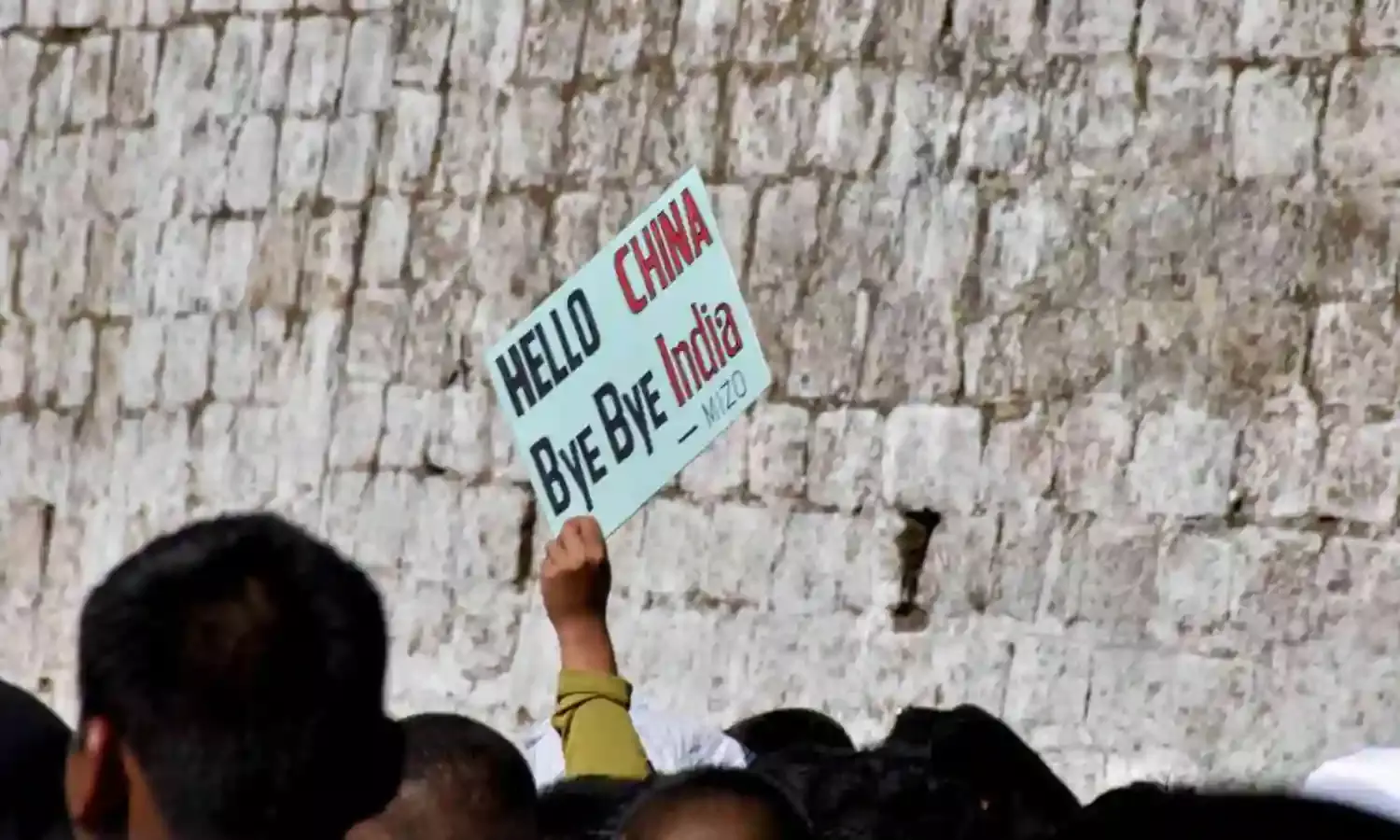'Hello China, Bye Bye India.' Protests Engulf India's Northeast Over Citizenship Bill
Protest placards in Mizoram read 'hello China, bye bye India.'

ITANAGAR: On Saturday when government officials were attending formal events to mark the country’s Republic Day, a number of people from various non-governmental organisations in Mizoram chose the day to give voice to their anger instead.
Over the course of the last year, the central government’s decision to push the Citizenship Amendment Bill to make it easier for people of six non-Muslim religious minorities from Afghanistan, Bangladesh, and Pakistan, to attain Indian citizenship has dominated discussions in the country’s Northeast. In a region where the people have long held deep-rooted ethnic identities, with most states having comparatively lower population -- for most people the idea that indigenous communities may become minorities in their own homes is a very real concern.
Already, several political parties from the region have expressed their reservation against the Bill that was passed in the Lok Sabha recently. One of the BJP’s allies in Assam, the Asom Gana Parishad, has already withdrawn its support to the saffron party and regional political parties that are part of the BJP-led anti-Congress forum- the North East Democratic Alliance -and recently adopted a resolution against the Bill.
In fact, Mizoram chief minister Zoramthanga has said that his party, Mizo National Front, is willing to walk out of the alliance over the Bill.
In the Northeast, save for Assam’s Barak Valley region, there is uniform opposition to the Bill. While in Assam concerns have been raised over the influx of Bengali-speaking Hindus from Bangladesh, the protests in Mizoram are fuelled by claims that Bangladeshi citizens have been entering the state illegally for years and have assimilated into the existing Chakma population of the state who are primarily Buddhist.
Before Republic Day, the NGO Coordination Committee organised a protest in Mizoram’s capital Aizawl where people held placards that read: “Hello China, Bye Bye India”.
Ricky Lalbiakmawia, finance secretary of the North East Students’ Organisation that organised the protest rally along with the students union, Mizo Zirlai Pawl, is concerned about the alleged ‘abnormal increase’ of illegal immigrants.
He claimed that the Chakma population has increased from 198 individuals as listed in the 1901 Census to over 80,000 in 1991. He said that the increase in numbers is “not possible” unless there is illegal immigration from Bangladesh’s Chittagong Hill Tracts, the traditional homeland of the Chakma people.
While ethnic census are not conducted, former president of the influential Young Mizo Association (YMA) Lalbiakzuala said that the religious data indicates that there has been a substantial increase in numbers.
According to the last Census of 2011, the Buddhist population is 93,411 or 8.51 percent of the state’s total population. More than 87 percent of the state’s population is Christian, and Lalbiakzuala said that there are no Mizos who are Buddhist.
Lalbiakzuala said that the Border Security Force is “unable to check the infiltration of Chakmas” from Bangladesh and claimed that it submits annual reports to the Centre regarding cross-border illegal immigration.
He also alleged that since officials in the Chakma Autonomous District Council are Chakmas, the illegal immigrants are able to easily procure birth certificates to show that they were born in Mizoram.
Citizenship also means the right to vote, which Lalbiakzuala said is what BJP is aiming at and called it the party’s “appeasement policy”.
In Mizoram, the BJP was a non-entity until recently. But the party won its first Legislative Assembly seat in December’s election. Not surprisingly, the lone seat it won was from the Chakma Autonomous District Council assembly constituency.
The protest where the “Bye, Bye India” placards were held up was not just about politics though.
Lalbiakmawia said that Mizos and people from other states of the Northeast are subjected to racist behaviour in other parts of the country and that now “even the government is imposing laws against the Mizo people”.
While no one seriously believes that siding with China is a real option, the fact that such a protest took place in the only state or region in the country where the Indian Air Force bombed civilian areas in 1966, perhaps the Centre needs to be more sensitive to the aspirations of its existing citizens.



